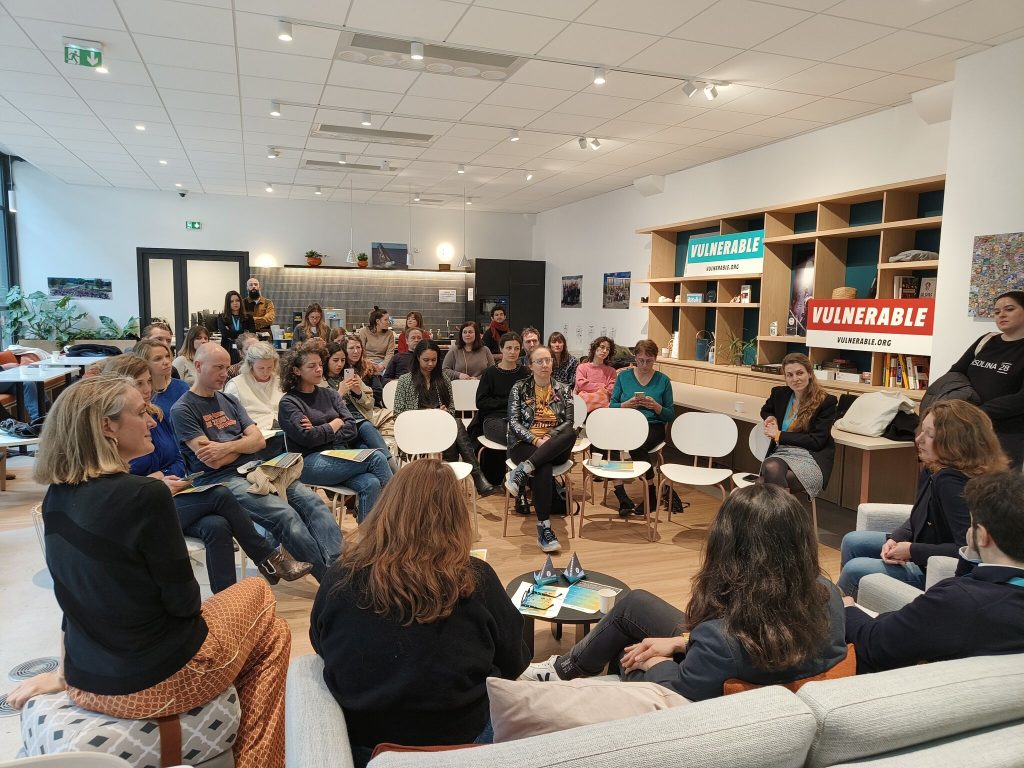Civocracy is revolutionising digital civic engagement by providing a secure and inclusive platform for citizens to actively participate in decision-making processes. By combining online tools with offline strategies, it bridges the gap between governments, NGOs, and communities, fostering meaningful dialogue and collaboration. In this interview with Marine Lesaint, Civocracy’s Digital Engagement Manager, we discuss the platform’s impact on participatory culture, the challenges of digital democracy, and how civic tech is shaping the future of citizen engagement.
Why was Civocracy created, and what challenges does it address?
Civocracy was developed to provide a safe space for citizens to share opinions, ideas, and participate in civic projects. The rise of social media has introduced issues related to authenticity, safety, and the influence of algorithms, making it difficult for genuine civic discourse to thrive. In response, Civocracy and other civic tech organizations have sought to create platforms that promote authenticity, inclusivity, and structured participation. Digital tools like Civocracy are especially beneficial for individuals who feel more comfortable expressing themselves online, ensuring broader and more diverse participation. The platform also emphasizes the need for robust moderation to maintain constructive and respectful discussions.
How do different countries and organizations approach citizen participation?
Citizen participation in administrative decision-making varies widely across countries. Some governments fear losing control when involving citizens in the process. In France, there is a growing trend of incorporating public opinion in infrastructure planning, such as the development of bike lanes. In contrast, Germany exhibits a more cautious approach to embracing digital participation. Beyond governments, NGOs and private companies are also recognising the limitations of traditional social media platforms when engaging with legislative matters. The need for legitimacy, safe content, and qualitative contributions drives organisations toward adopting civic tech solutions like Civocracy. However, digital tools should be used as a complement rather than a replacement for in-person participation initiatives.
How is Civocracy’s pricing structured, and what factors influence costs?
Civocracy’s pricing model is tailored to meet the needs of different clients, including companies, NGOs, and public administrations. The cost varies based on the size of the organisation, with smaller administrations or organisations paying lower fees. Initial costs are higher due to setup, training, and strategic framing, but these costs decrease over time. The subscription-based model typically ranges from a few hundred to over a thousand euros per month, with larger clients falling into the higher pricing tier. Despite being a small team of ten, Civocracy prioritises efficiency and flexibility, ensuring that the platform remains cost-effective.

Who are the key participants in Civocracy’s civic engagement process?
Civocracy engages with two primary groups: clients, such as public administrations, NGOs, and private companies that implement the platform, and the actual participants of the participatory process. Success depends on understanding the unique dynamics of each project and tailoring strategies accordingly. While a well-designed platform is crucial, effective communication through compelling narratives, storytelling, and targeted outreach is equally important. Civocracy goes beyond merely providing digital tools; it guides clients in developing effective communication strategies to ensure that participatory initiatives reach the right audience and achieve meaningful engagement.
How does Civocracy facilitate participation and ensure engagement?
Civocracy’s digital platform includes a variety of participatory and informative modules such as questionnaires, discussion forums, quizzes, and idea boxes. These tools are customisable, allowing organisations to tailor them to specific needs. Beyond participation, the platform features event sections, news updates, and resource-sharing capabilities. Administrators can track visits and contributions through a dashboard, ensuring transparency and continuous improvement. The subscription model includes access to all modules, with an emphasis on strategic framing to guide clients in effective platform usage. Customisation and ongoing support ensure that clients maximize engagement and achieve their objectives.
What insights has Civocracy gained from its engagement initiatives?
Civocracy’s engagement strategies evolve based on client feedback and observations. Regular follow-ups help refine communication strategies and sustain participation. The introduction of interactive elements like quizzes has helped maintain engagement. Experience has shown that offline communication methods—such as posters and flyers in public spaces—can significantly drive traffic to digital consultations. Combining online and offline strategies is key to successful engagement. Strategic framing, strong governance, and goal-setting are critical to maximizing participation and ensuring the success of civic initiatives.

What common pitfalls should be avoided in digital civic engagement?
One major challenge is participant fatigue. Keeping consultations open for too long can lead to declining engagement, similar to the effect of prolonged social media campaigns. Civocracy advises against lengthy, complex questionnaires, advocating instead for concise and well-timed consultations. Ensuring that participation remains dynamic and manageable is crucial for maintaining interest and effectiveness.
How can organisations successfully implement Civocracy’s approach?
In the journey of launching a successful project on Civocracy, three pivotal factors stand out, with a strong emphasis on cultivating a participative culture.
First and foremost is the need to instill a participative culture. Successfully initiating a project requires patience, as knowledge and understanding among participants develop gradually. Expecting immediate adoption and a rapid influx of participants is unrealistic. It is crucial to provide a clear explanation of the initiative’s purpose, help participants understand their role, and maintain transparent communication regarding intentions and anticipated outcomes. This gradual process applies across various organisational settings, including corporate environments, public administrations, and NGOs.
The second crucial factor is governance. From the outset, assembling the right individuals for strategic planning is essential. Participative campaigns often evolve into long-term, multifaceted initiatives, necessitating a well-structured governance model. Clearly defining roles and responsibilities ensures that every participant understands their contribution to spreading awareness, facilitating consultations, sharing content, and sustaining engagement over time.
Lastly, effective communication is just as vital. Civocracy underscores the importance of clear, impactful messaging throughout a project’s lifecycle to maximise engagement and participation.
What are the key takeaways from Civocracy’s model?
Civocracy provides valuable insights into digital civic engagement while also raising questions about its effectiveness and inclusivity. It acknowledges participant fatigue as a challenge, along with varying levels of maturity and willingness across different countries in embracing citizen participation. While digital platforms offer a space for those hesitant to voice their opinions in person, concerns about equity and accessibility persist, particularly in disadvantaged socio-economic contexts. To address this, supplementing digital initiatives with in-person activities is crucial. Although Civocracy presents promising features, continuous evaluation of its impact on inclusivity and equitable civic participation remains essential.
This case study can be found in The Toolbox of Experimental Participatory Methods, produced in the Horizon2020 EUARENAS project.
Explore more articles on participatory democracy.


